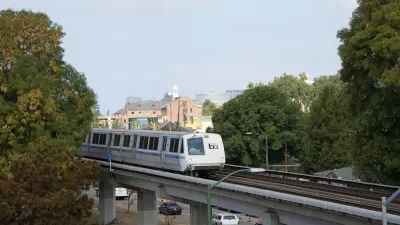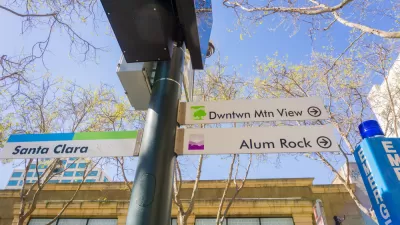Santa Clara County cities rebel against the agency's proposed plan to spend most of the Measure B funds on a Silicon Valley BART extension.

The Santa Clara Valley Transportation Authority (VTA) is retooling its plan for how to spend Measure B tax dollars after several cities protested the VTA's plan to spend most of the money on the Bay Area Rapid Transit (BART) extension to downtown San Jose. Now, the agency's revised plan will reallocate the funding to support more projects promised in the measure, reports Aldo Toledo for the Mercury News.
When the VTA proposed Measure B in 2016, "the VTA and supporters of the measure such as Silicon Valley Organization assured voters that that no more than 25% of the about $5.5 billion would go toward the BART extension," assuaging concerns from area cities that the focus on BART took away funds from badly needed local projects like pothole repairs and other road improvements. Santa Clara's Board of Supervisors agreed, rejecting the plan unanimously last month. "The public has been great about taking a regional perspective and supporting BART, but at some point we have to ask how we move people around our county in a way that is environmentally and economically sensible," says Supervisor Joe Simitian in the article.
The new plan, which increases the VTA's cost for the BART extension by over $2.5 billion, includes "$887 million for Caltrain grade separation projects, $156 million for increasing Caltrain’s corridor capacity, $230 million for Highway 85 improvements, $236 million for county expressways, $842 million for highway interchanges and a remaining $1.4 billion to be spent at the board’s discretion," writes Toledo.
FULL STORY: VTA comes up with new plan for spending Measure B funds after cities rebel

Alabama: Trump Terminates Settlements for Black Communities Harmed By Raw Sewage
Trump deemed the landmark civil rights agreement “illegal DEI and environmental justice policy.”

Planetizen Federal Action Tracker
A weekly monitor of how Trump’s orders and actions are impacting planners and planning in America.

The 120 Year Old Tiny Home Villages That Sheltered San Francisco’s Earthquake Refugees
More than a century ago, San Francisco mobilized to house thousands of residents displaced by the 1906 earthquake. Could their strategy offer a model for the present?

Trump Administration Could Effectively End Housing Voucher Program
Federal officials are eyeing major cuts to the Section 8 program that helps millions of low-income households pay rent.

NRDC Releases State Transportation Scorecard
The Getting Transportation Right report highlights which states are making the most progress on reducing transportation emissions and improving access to clean transportation options.

Study: How Urban Parks Can Support Biodiversity
Conservation and recreation can go hand in hand in urban green spaces designed to serve both humans and local wildlife.
Urban Design for Planners 1: Software Tools
This six-course series explores essential urban design concepts using open source software and equips planners with the tools they need to participate fully in the urban design process.
Planning for Universal Design
Learn the tools for implementing Universal Design in planning regulations.
Clanton & Associates, Inc.
Jessamine County Fiscal Court
Institute for Housing and Urban Development Studies (IHS)
City of Grandview
Harvard GSD Executive Education
Toledo-Lucas County Plan Commissions
Salt Lake City
NYU Wagner Graduate School of Public Service




























